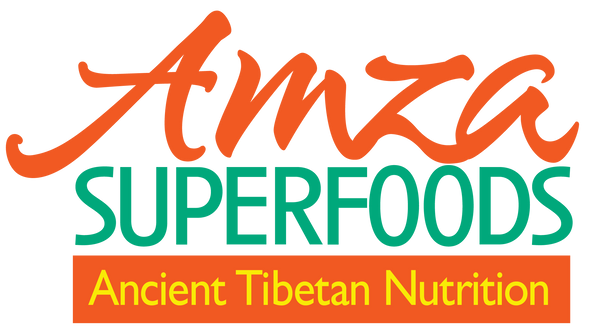
Tsamba is More Than Just a Tibetan Staple
Share
Tsamba རྩམ་པ or Tsampa, is not just a staple food, but a cultural symbol deeply rooted in Tibetan heritage. (you can read more about it in my initial blog, Tsamba: First Food of the Tibetans, Part 1). You'll discover that Tsamba is a cultural touchstone, a traveler's companion, and a symbol of Tibetan resilience.


What’s Tsamba རྩམ་པ or Tsampa
Tsamba, the primary cereal food in all the regions of Tibet, is made by grinding roasted barley. Other roasted grains, such as wholegrain wheat and peas, can also be used, but barley is the most common.
Tsampa has sustained Tibetans for centuries, creating a nourishing, energy-rich food that fueled nomads, farmers, and mountain dwellers. (Tibet was identified as one of the earliest societies to cultivate barley, starting 5600 years ago.)
Making Tsamba involves washing and roasting the grains in sand and grinding them into a fine or coarse powder. This unique texture, nutty flavor, rich nutrient content, and barley's short growing season make Tsamba a staple in Tibetan cuisine.
Traditionally, Tsamba is enjoyed either in solid form or as hot cereal. In the Amdo region, where I'm from, we paired it with milk or black tea and butter tea in the Lhasa region. We make Tsamba Cakes for special occasions and Losar (Tibetan New Year).
Both the porridge and solid versions are equally popular. It combines with Tsamba the flour, dry fine cheese, butter, tea, and sugar, mixed all in a small bowl. The difference between the solid Tsamba meal and hot cereal is that the latter uses fewer dry ingredients and more liquid.


Growing up in Regong, my grandmother and mother made Tsamba dough into bite-sized bowls filled with garlic-chili-yerma (Sichuan pepper) sauce. It's a sensational summer meal. Making savory Tsamba soups is not a stranger either.
But, the beauty of Tsamba lies in its versatility.
Beyond Tradition, Tsamba in the Modern Kitchen
While the classic pairings with tea or butter tea are undeniably delicious, Tsamba's versatility also extends to modern cuisine. Its high fiber content and long-lasting energy benefits make it a perfect ingredient for health-conscious cooks. Its neutral flavor opens up a world of culinary possibilities, inspiring chefs to experiment with various dishes.
Imagine a breakfast bowl packed with protein and fiber, where toasted Tsamba forms the base and topped with fresh fruit, yogurt, or kefir. You could make it into pancakes or waffles. Or picture savory Tsamba patties seasoned with warm spices, perfect for a light lunch or snack. The possibilities are endless.
A Quick and Easy, No-cook Tsamba Breakfast Mix
For those of us with busy schedules, a quick and easy Tsamba mix is a lifesaver. I enjoy it almost every day.
At Amza Superfoods, our Tsamba is made of heirloom wholegrain Purple Karma Barley, so it's more nutritious than regular white barley or oats—clean and straightforward ingredients yet packaged with fiber, protein, and minerals. Besides, barley has a low glycemic index (30), which helps manage diabetes, blood sugar levels, and weight.
 Here's our product that you can try. Since October chills are upon us, it's the perfect season for a nutrient-powerhouse hot cereal to which you need to just add hot tea, milk, or water: No-cook Tsamba Breakfast Mix with Nuts & Dates.
Here's our product that you can try. Since October chills are upon us, it's the perfect season for a nutrient-powerhouse hot cereal to which you need to just add hot tea, milk, or water: No-cook Tsamba Breakfast Mix with Nuts & Dates.The Journey Continues
My journey with Tsampa is a continuous exploration. I'm always discovering new ways to incorporate this unique ingredient into my cooking and our Amza Superfoods product, showcasing its versatility and potential uses.
Do you have any favorite Tsamba recipes? We'd love to hear from you and share your culinary creations with our community. Feel free to share them in the comments below!
